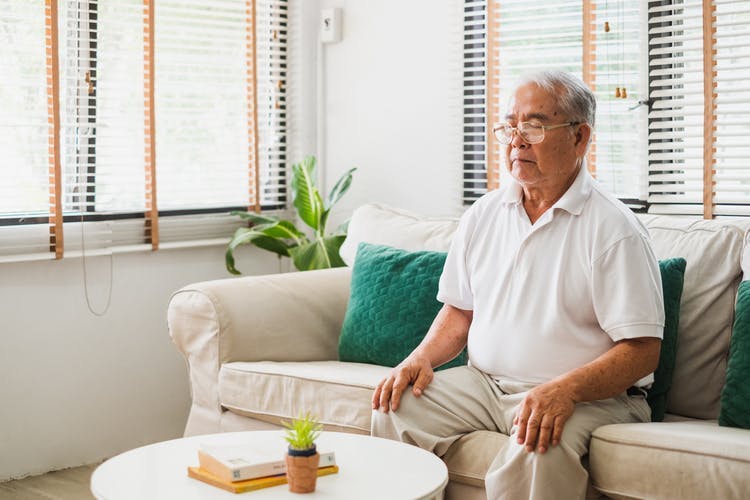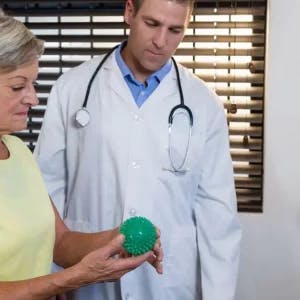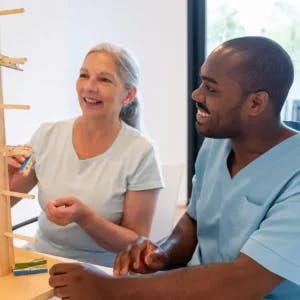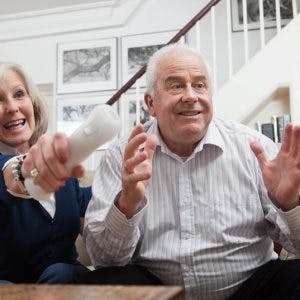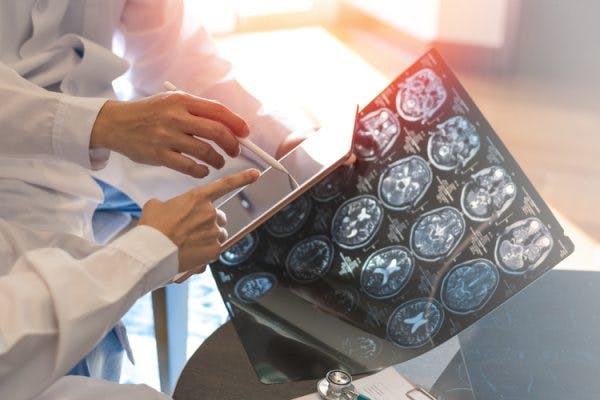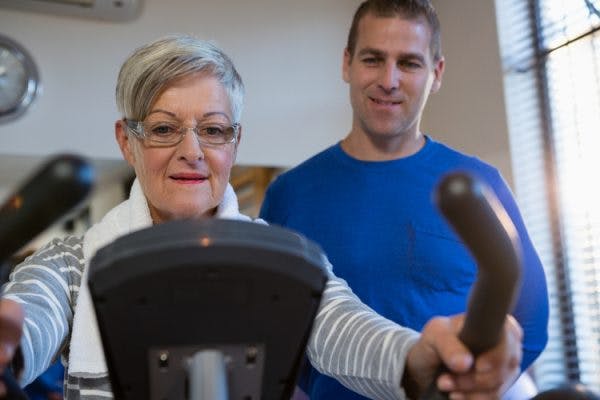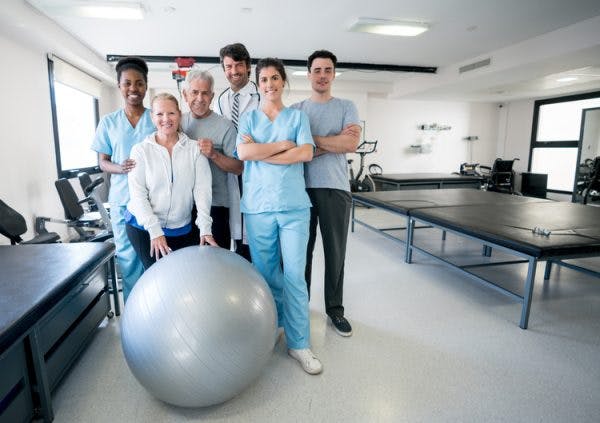Mental practice, also called motor imagery, involves visualizing yourself performing a movement without actually moving at all. During stroke rehabilitation, mental practice is an ideal recovery treatment technique for improving mobility, especially for individuals who struggle with post-stroke paralysis or other types of limited mobility.
Through mental practice, even if a survivor can’t move their affected muscles, they can still visualize a movement or mentally practice a rehab exercise before physically performing it. This stimulates the brain and activates neuroplasticity, the brain’s natural ability to heal itself.
Additionally, mental practice for stroke patients is a great rehabilitation method to utilize because it is cost-effective (free), non-invasive, and evidence-based. Another promising feature of mental practice is that it’s accessible to everyone during all stages of recovery.
This article will discuss the additional benefits of mental practice for stroke patients and some effective stroke visualization techniques to utilize.
Use the links below to jump straight to any section.
- How does mental practice for stroke patients work?
- Mental practice for stroke patients with paralysis
- Mental practice provides hope for stroke patients
- Stroke recovery visualization techniques
How Does Mental Practice for Stroke Patients Work?
Mental practice is a powerful method that can help individuals improve motor function after a stroke. Before diving into how it works, it first helps to understand how a stroke can affect movement.
A stroke occurs when an artery in the brain is compromised, depriving certain areas of oxygen-rich blood. Until the stroke is treated, neural pathways or connections in the affected area sustain damage.
When areas of the brain that contribute to movement, such as the motor cortex, are affected, the brain can no longer communicate properly with the affected muscles. This results in motor difficulties, such as hemiplegia (paralysis on one half of the body) or hemiparesis (weakness on one half of the body).
Fortunately, the brain has the ability to rewire itself and restore neural connections through neuroplasticity. To improve communication between the brain and muscles after a stroke, neuroplasticity must be activated through massed practice of rehab exercises.
Practicing an exercise consistently helps the brain reinforce the importance of that movement and strengthen the associated neural connections. For example, the more you practice lifting your hand to your mouth (as if eating), the more the brain will strengthen that movement pattern, eventually making it easier to reach your hand to your mouth. For this reason, high repetition of targeted exercises and activities is important to stimulate neuroplasticity.
While physically practicing specific movements is a great way to promote neuroplasticity, mental practice can also activate neuroplasticity and help restore motor skills after stroke. Studies have shown that mentally practicing exercises sparks changes in the areas of the brain correlated to movement, such as the primary motor cortex.
Therefore, achieving high repetition of both physical and mental rehab exercises is essential to improve mobility after a stroke, especially for individuals with paralysis. The more a movement is practiced, the stronger the neural pathways will be for that movement.
Mental Practice for Stroke Patients with Paralysis
Even stroke patients with paralysis can spark neuroplasticity with mental practice by simply visualizing a specific movement. For example, if you struggle with paralysis in your legs, you can stimulate the brain by visualizing yourself moving your affected leg or doing more specific movements like lifting your leg into bed.
This can help activate neuroplasticity, strengthen the neural connections for the movement you visualize, and eventually restore communication between the brain and your affected muscles. When mental practice is combined with conventional physical therapy, it can help improve upper and lower limb function and increase the overall performance of the activities of daily living after stroke.
Thus, mental practice provides hope to individuals with post-stroke paralysis and other secondary effects during all stages of recovery.
Mental Practice Provides Hope for Stroke Patients
Whether your stroke was recent or years ago, there is hope for recovery through neuroplasticity. Consistent practice of rehab exercise can spark new changes in your brain and activate neuroplasticity at any age. However, it takes more practice to produce the same changes in the brain as you get older.
Fortunately, studies have shown that mental practice can help individuals reach their recovery goals long after their stroke. One study, in particular, focused on chronic stroke survivors who were between one and fourteen years post-stroke and found that mental practice combined with physical exercise helped significantly improve arm function.
With this in mind, it’s beneficial to exercise your affected muscles as much as possible throughout your recovery process with both physical and mental practice.
Stroke Recovery Visualization Techniques
While there are many ways to practice motor imagery, every individual is encouraged to experiment with different techniques to find something that is fun and effective for them. Studies show the more you enjoy rehab exercises, the more likely you are to stay consistent and motivated during your recovery process.
Therefore, it’s important to find stroke visualization exercises that you enjoy and can help you reach your goals. Your therapist may also be able to provide you with stroke visualization exercises that specifically target your affected muscles.
To help you get started, here are some mental practice techniques you can try:
- Short & long visualizations: The more time you spend visualizing your recovery, the more neuroplasticity is stimulated, and the higher the chances of seeing promising results. Try to spend about 3-5 minutes mentally practicing a task before physically practicing it. For an added challenge, try to practice up to 20 minutes or more.
- Rehab exercises & activities of daily living: If you’re working on specific exercises during your therapy sessions (or with at-home therapy devices like FitMi), you can mentally practice those exercises before physically performing them. For instance, if you’re practicing activities of daily living like eating, you can mentally practice relevant tasks such as using a fork or spoon.
- Improvised & recorded: You can improvise mental practice by simply closing your eyes and visualizing the task that draws your attention that day. Because the brain needs consistency and repetition to rewire itself, it’s important to stick to the same exercises or activities for at least a week. For even more stimulation, you can make yourself an audio recording where you guide yourself through a visualization exercise.
- Internal & external: You can practice internal motor imagery by visualizing yourself from the first-person point of view and looking at your surroundings. Or you can practice it externally from the third-person point of view, looking outward-in. Both internal and external practice help stimulate the brain and activate neuroplasticity.
- Simple & complex: The more senses you engage in your visualization, the more powerful it will be. Try to think about all the things you feel, smell, and hear as you mentally practice a task. For example, if you’re visualizing yourself getting dressed, try to focus on the texture of the fabric and how the clothes may feel.
Because mental practice is most beneficial when combined with physical rehab exercises, it’s important to establish a home therapy program. This can help you stay motivated to achieve massed practice regularly and help you reach your recovery goals more swiftly.
Using Mental Practice to Boost Your Stroke Recovery
Mental practice is an effective, evidence-based therapy that can help survivors during all stages of recovery. Visualizing stroke recovery exercises helps stimulate neuroplasticity, which is necessary to improve mobility after stroke, even for survivors with paralysis.
Before you begin your stroke recovery exercises, try setting aside time to visualize some of the movements that you want to improve. Utilizing motor imagery beforehand can provide extra stimulation to the brain and help boost your results.
We hope this article helped you understand how mental practice for stroke patients is beneficial and encouraged you to visualize your recovery positively.

